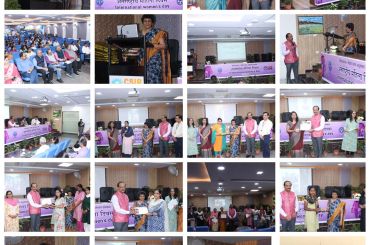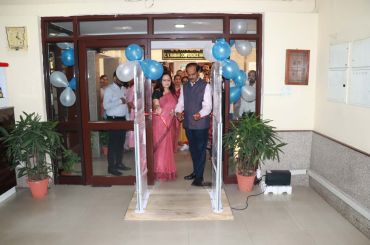How much extra fuel do bad roads guzzle? Study in Delhi-NCR to find out
Newspaper: Hindustan Times
Date: 15th May 2017
Source Link: http://www.hindustantimes.com/delhi-news/how-much-extra-fuel-do-bad-road...
Even though India is building around 22 km of roadways every day, there is no data to claim which roads are fuel friendly. Around 47,350 km of roads were laid during 2016-17 under the Pradhan Mantri Gramin Sadak Yojana.
![[node:title]](/sites/default/files/news/news-15-05-2017.jpg)
Study will try to find out if concrete roads increase your car’s mileage
Ask any car owner about their vehicle giving poor mileage and they would give you umpteen reasons from poorly maintained engines, faulty driving styles to bad fuel quality. But how much extra fuel do you need because of pothole-filled roads? Do concrete roads increase your car’s mileage or does your car consume more fuel on asphalt roads?
Even though India is building around 22 km of roadways every day, there is no data to claim which roads are fuel friendly. Around 47,350 km of roads were laid during 2016-17 under the Pradhan Mantri Gramin Sadak Yojana (PMGSY).
For the first time a study has been initiated in India to reveal how much extra do we spend while travelling on bad roads and which type of roads are the most fuel friendly and cost-efficient. The study, which kicked off from Thursday, would be conducted mostly on roads, expressways and highways in and around Delhi-NCR.
![[node:title]](/sites/default/files/news/news2-15-05-2017.jpg)
“The study would tell us how much extra fuel we consume while negotiating with potholes, curves, flyovers. It would also reveal whether asphalt roads or concrete roads give more mileage among others. This is the first of its kind study in India,” said Dr Ravindra Kumar, principal scientist of Central Road Research Institute’s (CRRI) transport and planning division in Delhi.
The one-year-long study is being carried out by the CSIR-CRRI, under the Council of Scientific and Industrial Research (CSIR) and is being funded by the Petroleum Conservation Research Association.
“A vehicle fitted with laser-emitting equipment, rut scanners, GPS and cameras will first travel for nearly 1,000 km along some of the best roads in the vicinity of Delhi-NCR, such as the Yamuna Expressway and NH24, to collect the baseline data on the fuel-efficient roads,” said Kumar.
Rut scanners and hundreds of laser beams emitted almost every other second will take readings of potholes, road gradient and roughness, among others, after every 2.5mm of distance travelled. The video camera will record the roads and GPS will give the exact locations.
Researchers will then drive at least three types of vehicles on various types of roads in Delhi — roads filled with potholes, flyovers, concrete roads and roads made of bitumen among others — to find out how much extra fuel does it require to drive along these roads. A vehicle fitted with hi-tech gadgets will also travel along with them to collect data about the bad roads.
“These vehicles will be fitted with fuel metres and will be driven along various roads at various speeds ranging from 20kmph to 80kmph. We have chosen mini segment cars, a SUV and a truck. We would test the truck both in loaded and unloaded conditions,” he added.
Some of the roads that the researchers have chosen are the concrete roads between Najafgarh and Dhansa, Barapullah flyover and potholed roads of Dilshad Garden, Narela and Madanpur.
The difference with the baseline data would tell researchers how much we are losing – both fuel and money — while travelling on bad roads.
A few developed countries such as USA, UK and Canada among others have already done such studies. No such data however exists in India.
“While studies in Canada have shown that a loaded truck while travelling on a concrete road could save at least 4% fuel, a similar study done in Texas, USA have revealed that vehicles travelling on concrete roads can save at least 3-8% fuel,” he added.
Experts feel that the findings would help planners and policy makers to decide the type of roads that India should build in future to save a portion of its GDB which goes down the drain because of bad roads.











































